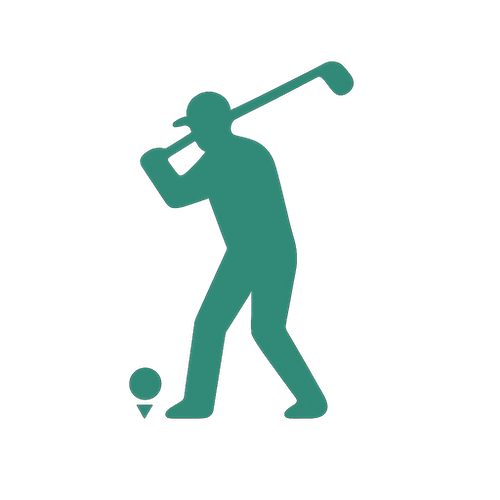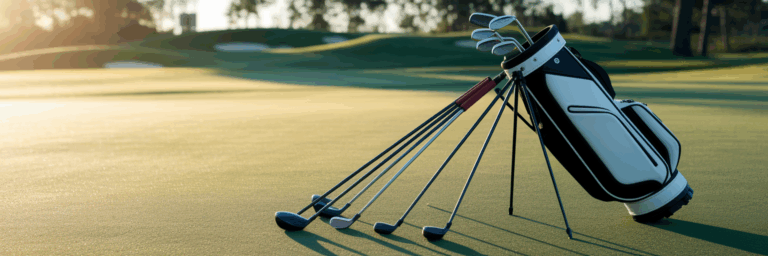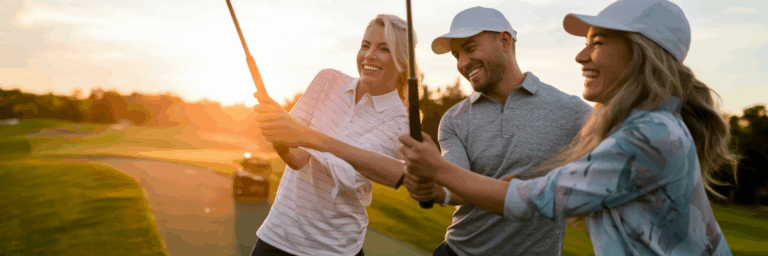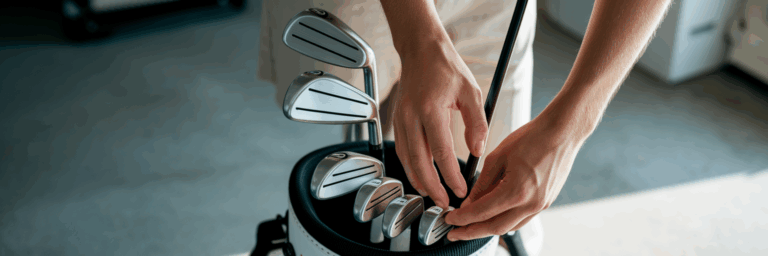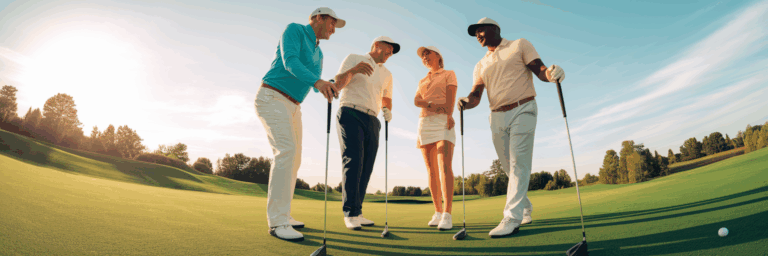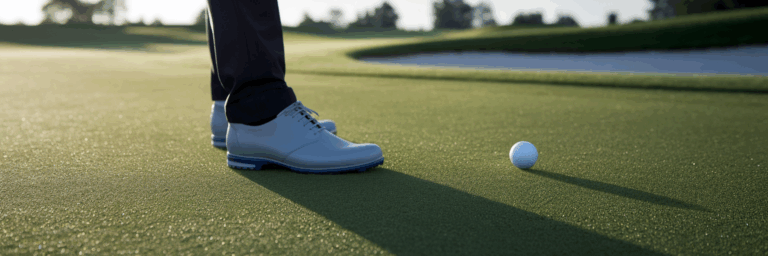A Beginner's Guide to Choosing Perfect Golf Shoes
Why Your Shoes Are a Key Piece of Golf Gear
When you first start playing golf, it is natural to focus on the clubs. The gleam of a new driver or the feel of a perfectly weighted putter is exciting. But many beginners overlook a piece of equipment that is just as critical for performance and enjoyment: their shoes. Your connection to the ground is the starting point for every single shot you take.
Think of your golf shoes as the foundation of a house. You would not build on shaky ground, and you should not build your swing on unstable footwear. The right shoes provide the traction and stability needed to maintain balance throughout your swing. This solid base allows you to generate power from the ground up, leading to more consistent and accurate shots. Without it, your feet can slip, costing you both distance and control.
Beyond the swing, a round of golf involves walking several miles. Wearing shoes that are not designed for this activity can lead to sore feet, blisters, and fatigue, distracting you from your game. Investing in proper footwear is a foundational step in learning how to play golf. It boosts your confidence, keeps you comfortable, and allows you to focus on what matters most: enjoying your time on the course.
Spiked vs. Spikeless The Great Debate
Once you start looking for golf shoes, you will immediately encounter the main question: spiked or spikeless? The choice can feel confusing, but it comes down to a simple trade-off between maximum grip and all-around convenience. Understanding the difference is key to figuring out how to choose golf shoes that fit your needs.
Traditional spiked shoes no longer use the old metal spikes that damaged greens. Today, they feature "soft spikes" made of plastic or rubber. Their primary advantage is superior traction. On wet, slippery mornings or on hilly courses, these spikes dig into the turf to give you an unshakeable connection to the ground. This is why many professional golfers still prefer them for tournament conditions.
Spikeless shoes, on the other hand, have soles with small, strategically placed rubber nubs or dimpled patterns. Their biggest selling points are comfort and versatility. They often feel like a comfortable pair of trainers and can be worn straight from your car to the first tee, and even into the clubhouse afterward. As expert reviews often highlight, this convenience is a major factor. For instance, a report from Today's Golfer notes that while spiked shoes offer added traction, spikeless options provide more off-course versatility without sacrificing comfort. For most beginners playing in fair weather, a quality spikeless shoe is an excellent and practical starting point in the spiked vs spikeless golf shoes debate.
| Feature | Spiked Golf Shoes | Spikeless Golf Shoes |
|---|---|---|
| Traction | Maximum grip, best for wet or hilly terrain | Good grip, ideal for dry to damp conditions |
| Comfort | Generally less flexible, can be less comfortable for walking | Highly comfortable, often feel like athletic shoes |
| Versatility | For course use only; cannot be worn indoors | Can be worn on and off the course |
| Course Impact | Can sometimes leave marks on soft greens | Very gentle on greens |
Finding the Perfect Fit for All-Day Comfort
You can have the most technologically advanced shoe in the world, but if it does not fit correctly, it is useless. Sizing for golf shoes can differ from your everyday trainers, so what works for one brand might not work for another. This is why finding truly comfortable golf shoes starts with a proper fitting. For your first pair, we strongly recommend trying them on in a store rather than buying online.
Your feet will be carrying you for four to five hours, so a precise fit is non-negotiable. It prevents blisters, reduces fatigue, and provides the stable platform your swing needs. Follow these simple steps to ensure you walk off the 18th green as comfortably as you walked onto the first tee.
- Shop in the afternoon. Your feet naturally swell slightly throughout the day. Trying on shoes later ensures you get a fit that will not become too tight midway through your round.
- Wear the right socks. Bring the same type of socks you plan to wear while playing golf. The thickness of your sock can make a significant difference in how a shoe fits.
- Try on both shoes. Most people have one foot that is slightly larger than the other. Always fit the shoe to your larger foot to avoid cramping and discomfort.
- Walk around. Do not just sit there. Walk around the store for a few minutes. Your heel should feel snug and not slip, but your toes should have enough room to wiggle freely.
A common rule of thumb, as highlighted in fitting guides from brands like FootJoy, is to ensure there is about a half-inch of space between your longest toe and the end of the shoe. Also, pay attention to arch support and cushioning. Some shoes come with removable insoles, which is a fantastic feature if you need to use custom orthotics for extra support.
Key Materials for Weather and Performance
The materials used to construct a golf shoe directly impact its comfort, durability, and ability to handle different weather conditions. The upper part of the shoe is typically made from either natural leather or modern synthetic materials, and each has its own advantages.
Natural leather is prized for its breathability, softness, and ability to mold to the shape of your foot over time, offering a custom-like fit. It provides a classic look and excellent comfort. On the other hand, synthetic materials are often lighter, easier to clean, and typically come with superior waterproofing technology right out of the box. They offer consistent performance and require less maintenance.
One feature you should never compromise on is waterproofing. Even on a sunny day, morning dew on the fairway can quickly soak through a non-waterproof shoe, leading to discomfort and blisters. We believe that waterproof golf shoes are an absolute must. Many brands are so confident in their technology that they offer a one or two year waterproof guarantee, which is a great indicator of quality.
Breathability is another crucial element, especially for playing in warm weather. Breathable materials allow heat and moisture to escape, keeping your feet dry and comfortable. Finally, remember that performance is not just about spikes. As experts at EW Motion Therapy point out, a well-designed sole with good flexibility and traction patterns offers essential grip and stability. This combination of a sturdy sole and quality upper materials creates a shoe that supports your swing and keeps you comfortable all day.
Making Your Investment Last
A good pair of golf shoes is an investment in your comfort and your game. With a little bit of care, you can extend their life and ensure they perform well for many rounds to come. Just like you wipe down your clubs after a day on the course, your shoes deserve a few minutes of attention. This simple routine will protect the materials, maintain the fit, and save you money in the long run.
Developing good maintenance habits is easy and does not take much time. By following these simple tips, you will keep your shoes in top condition, ready for your next round.
- Clean After Every Round: Use a damp cloth to wipe away any dirt, sand, or grass. Caked-on dirt can break down the shoe's materials over time.
- Use Shoe Trees: Cedar shoe trees are fantastic. They help the shoes maintain their shape and, more importantly, absorb moisture from the inside, preventing odors and material degradation.
- Air Dry Naturally: If your shoes get wet, stuff them with newspaper and let them air dry at room temperature. Never use a radiator, hairdryer, or other direct heat source, as intense heat can weaken adhesives and damage leather.
- Check Your Spikes: If you chose spiked shoes, check the soft spikes periodically for wear. Worn-down spikes lose their grip, so replace them as needed to maintain traction.
Your Confident Next Step on the Course
Choosing the right footwear does not have to be complicated. By focusing on the three pillars of a great golf shoe, you can make a decision that supports your game from the ground up. First, consider your typical playing conditions to decide on traction (spiked vs. spikeless). Next, prioritize a perfect fit for all-day comfort, because a sore foot is a major distraction. Finally, select materials that offer the weather protection and breathability you need.
There is no single "best" shoe for everyone. The best golf shoes for beginners are the ones that feel great on your feet and give you the confidence to swing freely. This guide gives you the knowledge to walk into a store and make a smart choice. With the right pair on your feet, you can stop thinking about your equipment and start focusing on the joy of the game. That, after all, is the ultimate goal for anyone learning how to play golf.
